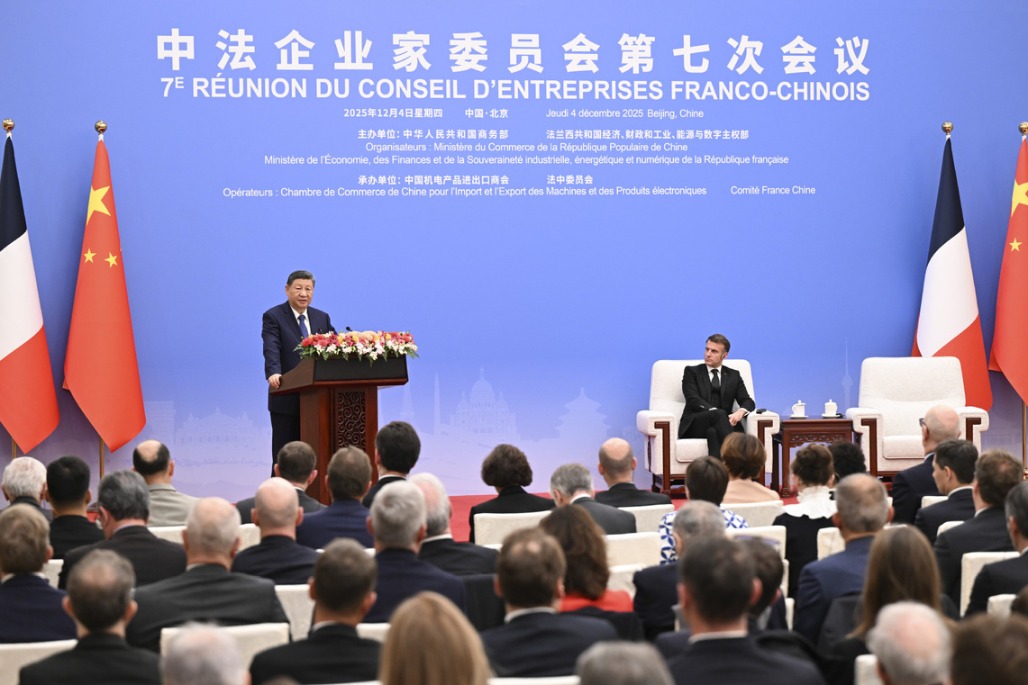China and the World Trade Organization
China Daily | Updated: 2018-06-29 08:25
3. Fulfilling commitments on trade in services
Extensively opening up the services market. China has striven to boost the services industry and increase its share of contribution to the economy. Of the 160 services sub-sectors under the 12-sector WTO classification, China committed to opening up 100 sub-sectors under 9 sectors, a level approximate to the average 108 sub-sectors committed by the developed members of the WTO. By 2007, China had honored all of its commitments on trade in services.
Continuously reducing restrictions. China has step by step lowered the threshold for foreign investment to enter the services sectors in China, lifted geographical and quantitative restrictions on services according to schedule, and constantly broadened the business scope for foreign investment in the services sectors. China has permitted wholly foreign-owned enterprises in 54 subsectors such as courier, banking and property insurance services, allowed foreign majority ownership in 23 sub-sectors such as computer and environment services, and accorded national treatment to foreign capital in 80 sub-sectors such as telecommunication, rail transport, and tourism services. In 2010, foreign direct investment (FDI) flowing into China's services industry surpassed that into manufacturing industry for the first time. In 2017, FDI in the services industry made up 73 percent of all FDI in China.
4. Fulfilling commitments on IPR protection
Strengthening IPR protection on China's own initiative. Strengthening IPR protection is the centerpiece for improving the property rights protection system, and it would provide the biggest boost to the competitiveness of the Chinese economy. It not only serves China's own development needs, but also helps cultivate a business environment that is law-based, internationalized and business-friendly. China encourages technological exchanges and cooperation between Chinese and foreign enterprises, and protects the lawful IPR owned by foreign enterprises in China. At the same time, we hope foreign governments will also improve protection of Chinese IPR.
Building a full-fledged legal system on IPR protection. Since acceding to the WTO, China has formulated and improved its laws and regulations on IPR protection, set up IPR working mechanisms with many countries, drawn upon advanced international legislative practices, and built an IPR legal system that conforms to WTO rules and suits national conditions of China. The amended Trademark Law sets up a system of punitive damages. The amended Anti-Unfair Competition Law improves the protection of trade secrets, identifies act of confusion, introduces the concept of sign and expands the scope of protection for sign. Currently China is working on amending the Patent Law and the Copyright Law.
Continuously strengthening law enforcement on IPR protection. China has enhanced the dominant role of the judiciary in IPR protection to significantly raise the cost for offenders and fully unlock the deterrent effect of relevant laws. The State Intellectual Property Office has been restructured to strengthen law enforcement. China has set up three IPR courts in Beijing, Shanghai and Guangzhou, and special judicial organs at 15 intermediate courts in Nanjing, Suzhou, Wuhan, Xi'an and other cities to handle cross-regional IPR cases, including those related to patents. China strengthened administrative law enforcement on intellectual property protection and launched special campaigns targeting outstanding problems, which effectively protected intellectual property rights. Such campaigns include "Convoy Campaign" for protecting patent rights, the "Sword-net Campaign" for combating online infringement and piracy, the "Sweeping Campaign" for cracking down pornography and illegal publication in the copyright field, the "Network Sword Campaign" for combating IPR infringements and counterfeits and the "Sword Actions on Quality Control" for cracking down counterfeits.
Attaining notable results in IPR protection. Since 2001, intellectual property royalties paid by China to foreign right holders has registered an annual growth of 17 percent, reaching USD28.6 billion in 2017. In 2017, China received 1.382 million invention patent applications, ranking the first in the world for the seventh consecutive year. Nearly 10 percent of the applicants were foreign entities and individuals. Invention patent applications filed by foreign entities and individuals in China reached 136,000, growing by threefold compared with 33,000 in 2001. According to the World Intellectual Property Organization, 51,000 patent applications filed from China through the Patent Cooperation Treaty were accepted in 2017, second only to the US.
5. Fulfilling commitments on transparency
Providing a solid legal basis. The Legislation Law, the Regulations on Procedures for Formulation of Administrative Regulations, and the Regulations on Procedures for Formulation of Rules explicitly provide for the solicitation of public comments on draft laws, administrative regulations and rules. The legislative affairs commission of the Standing Committee of the National People's Congress regularly publishes the Laws of the People's Republic of China (English edition); the State Council's legislative affairs organ regularly publishes the Laws and Regulations of the People's Republic of China Governing Foreign-Related Matters (Chinese and English bilingual edition); and the Ministry of Commerce regularly publishes trade policies in China Foreign Trade and Economic Cooperation Gazette.
Comprehensively implementing the WTO notification obligations. China has submitted notifications to the WTO on a regular basis concerning the amendment, revision and implementation of relevant laws, regulations and measures as required by the WTO. By January 2018, China had submitted over one thousand notifications covering areas such as central and sub-central subsidy policies, agriculture, technical regulations, standards, conformity assessment procedures, state trading, trade in services, and IPR laws and regulations.
6. Making tremendous efforts to honor its commitments
China made extensive and profound commitments on opening up when entering the WTO. Domestic companies were confronted with international competition, and most industries faced great difficulties. Rising up to these challenges, Chinese companies took the initiative to promote structural readjustment, participated in the global value chains and significantly increased their international competitiveness.
























